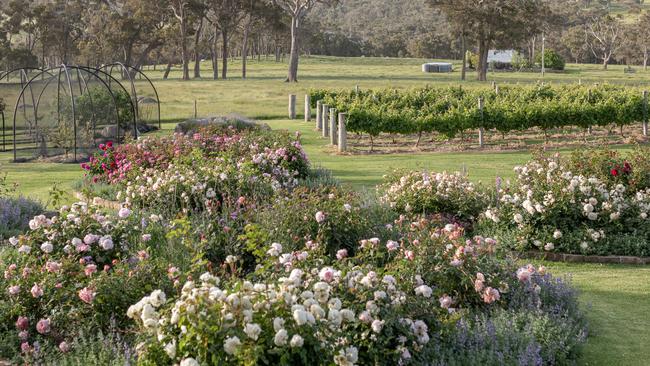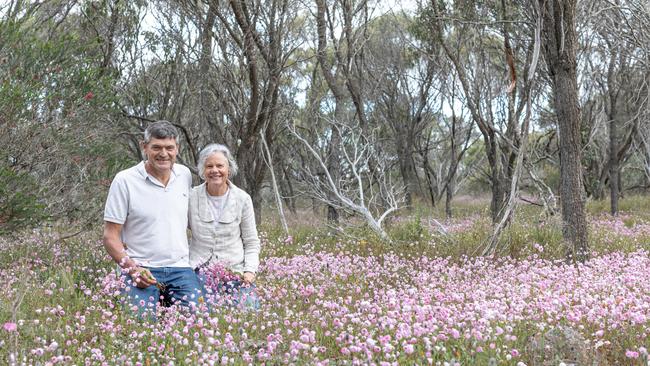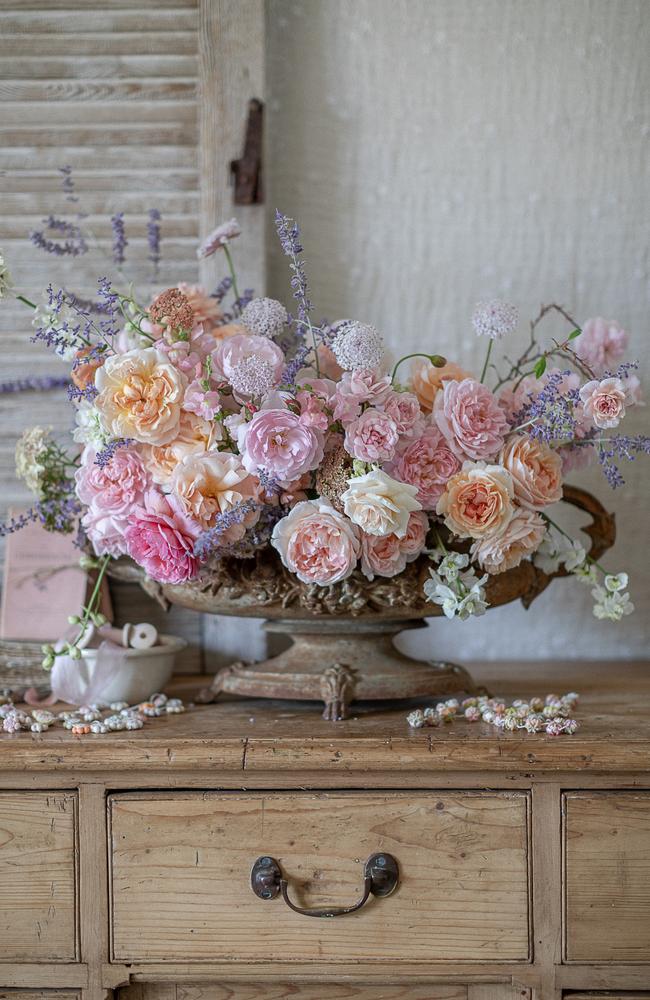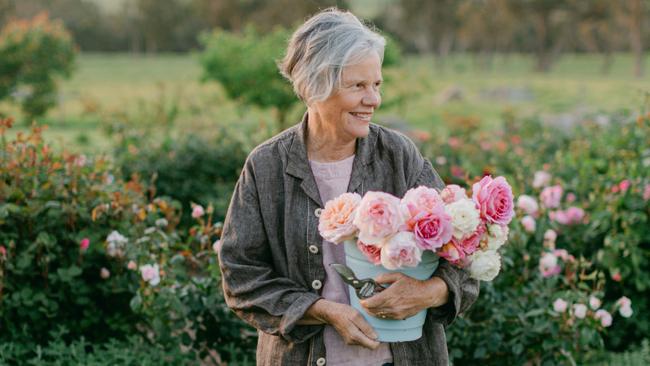It’s a beautiful life for flower farmer Helen Leighton
Growing flowers seems like an idyllic occupation, especially when it’s combined with a country garden, pinot noir vineyard and writing.

Growing flowers seems like an idyllic occupation, especially when it’s combined with nurturing a large country garden in a superb setting. Riverdale Farm covers 40ha alongside the Kalgan River near Albany in Western Australia, with excellent soils and reliable water. But flower farmer Helen Leighton has a big workload, also running a floral design business and working alongside husband Jim (who has a full-time job too), tending to their pinot noir vineyard, Murray Grey cattle, beehives, vegetable garden and orchard. In her “spare” time, Leighton (pictured) is also a skilled photographer, keen baker, quilter and now author.

It was never her intention to write a book, but the pandemic forced her to slow down. “I was exhausted from the constant flurry of gardening tasks, workshops and weddings,” she says. “So in an attempt to become more mindful, I began a journal to observe the simple moments of everyday life.” That journal, along with many of her gorgeous photos, has become Garden Gathered (The Flower Press, $89.95), in which she shares her secrets for growing and designing with flowers, and insights into living seasonally and gardening sustainably. She chose the expensive option of producing the book locally, using a graphic designer, artist and photographer from Albany, and printing in Perth. “I wanted a product that had values that matched mine,” she explains.
Since buying the property in 2004, the couple – now in their late fifties – have renovated the house, restored the run-down cottage to create a charming B&B, and developed the gardens. “It has evolved over time and on a budget, using our own skills, to be what it is today,” she says.

Among the vast range of plants she grows are 350 roses, masses of hardy Mediterranean perennials, and extensive native species for both flowers and foliage. The natives mostly flower over winter and spring, before the exotics peak; favourites for picking include grevilleas, kangaroo paws, banksias and coneflowers (Isopogon). There’s also a dedicated cutting garden, formal kitchen garden, pear walk, and the David Austin rose garden of four petal-shaped beds bordered with catmint (Nepeta).
“Picking and arranging flowers from the garden is my ideal way of bringing my garden to a much wider audience,” says Leighton. “That’s the sweet spot. Making meaningful floral arrangements for special occasions from things that I’ve grown is where the real joy is.”
She laughs in agreement when I ask if people say she and Jim must be living the dream. “The hard work is all-consuming but we do love doing it together. We can creatively pursue our interests while making an overall lifestyle for ourselves.
“I hope the book gives readers ideas and inspiration to try new things and help build their own version of a beautiful life.”

–
Q&A
What tomato variety do you recommend for flavour, to grow in a Vegepod? Geoff Stumbles, Sydney
There are thousands of tomato varieties but your important factors are the limited height of a Vegepod and the humid climate. Choose small determinate or dwarf varieties; you’ll get most choice buying seeds rather than seedlings. Look at ‘Thai Pink Egg’, ‘Patriot’, ‘San Marzano’ and ‘Super Prize’. See the website dwarftomatoproject.net for dwarf heirloom varieties. Cherry tomatoes are usually the top choice in fruit fly areas as their tough skins resist attack, but Vegepod’s mesh canopy lid, if kept closed, will keep them out. Flavour is not just from the variety but affected by when, where and how they’re grown, and ripeness when picked.
How do I know when to dig up my potatoes? Marion Ramsay, Hobart
They’re ready when the tops of the plants die off, usually after four months. You can dig up a few when the plants start flowering; these “new” potatoes will be smaller and won’t keep as well, so eat them straight away.
What could we plant in a small, west-facing garden around a pool? I like fragrance and colour; my husband likes structured plants. Maria Simmonds, Sunshine Coast, Qld
For colourful flowers over a long period try dwarf hibiscus and dwarf oleander, and gardenias if kept watered. Indian hawthorn (Rhaphiolepis ‘Oriental Pearl’) is a neat bun shape; Canna ‘Tropicanna’ has colourful foliage and flowers. Abelia ‘Kaleidoscope’, several dwarf Nandina varieties and Alternanthera ‘Little Ruby’ have colourful foliage. Dwarf agapanthus and society garlic (Tulbaghia) make good edging plants to add structure.
Send your questions to: helenyoungtwig@gmail.com or Helen Young, PO Box 3098, Willoughby North, NSW 2068. The best question for December/January wins $200 worth of Neutrog products including POPUL8, Kahoona, Gyganic and Seamungus.

